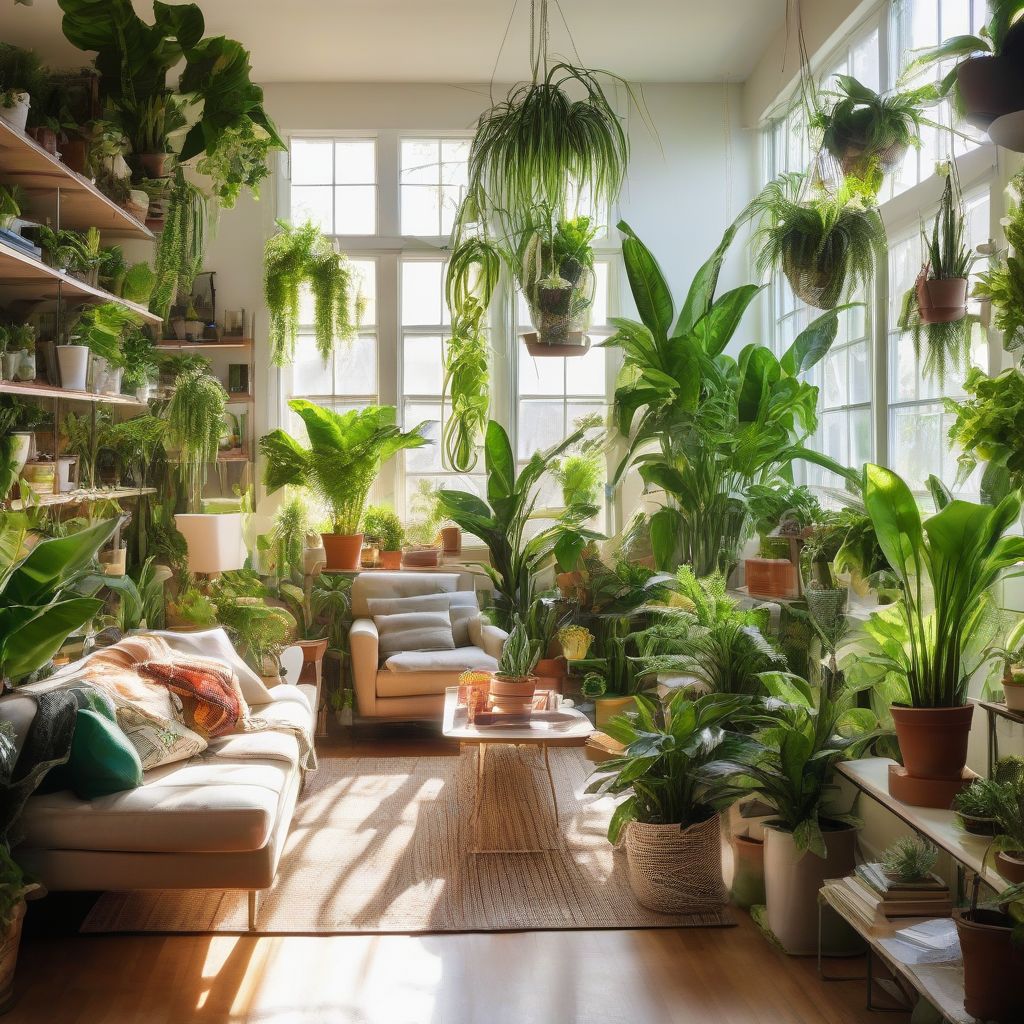Have you ever noticed how the air inside your home sometimes feels a little…off? Maybe it’s stuffy, a bit dusty, or just doesn’t feel as fresh as you’d like. You’re not alone! Indoor air quality is a growing concern, and it’s no wonder. We spend a significant amount of time indoors, and the air we breathe inside our homes can be surprisingly polluted.
But here’s the good news: You can take control of your indoor air quality and create a healthier, more breathable home environment with the help of some fantastic green home products.
Understanding the Importance of Clean Indoor Air
Before diving into the solutions, let’s talk about why clean indoor air is so vital. The Environmental Protection Agency (EPA) states that indoor air can be two to five times more polluted than outdoor air. That’s a startling statistic!
Common indoor air pollutants include:
- Volatile Organic Compounds (VOCs): These are emitted from everyday products like paint, cleaning supplies, and furniture.
- Dust Mites: Microscopic creatures that thrive in warm, humid environments like bedding and carpets.
- Pet Dander: Tiny flakes of skin shed by our furry friends.
- Mold and Mildew: Can grow in damp areas like bathrooms and basements.
Exposure to these pollutants can lead to a range of health issues, including:
- Respiratory problems (asthma, allergies)
- Headaches
- Fatigue
- Eye irritation
- Skin rashes
Green Home Products: Your Allies in the Fight for Fresh Air
Ready to clear the air? Here are some effective green home products designed to improve your indoor air quality:
1. Air Purifiers: The Frontline Defenders
Air purifiers are your first line of defense against indoor air pollutants. They work by drawing in air and passing it through a series of filters that trap dust, pollen, pet dander, and other airborne particles.
Choosing the Right Air Purifier:
- HEPA Filters: Look for purifiers with HEPA (High-Efficiency Particulate Air) filters. These filters can remove up to 99.97% of particles that are 0.3 microns in diameter or larger.
- Activated Carbon Filters: These filters are excellent at absorbing odors and gases, including VOCs.
- Size Matters: Consider the size of the room where you’ll be using the air purifier. A purifier that’s too small for the space won’t be as effective.
2. Houseplants: Nature’s Air Cleaners
Did you know that some houseplants are natural air purifiers? It’s true! Plants like spider plants, snake plants, and peace lilies can help remove toxins from the air and release oxygen.
Green Thumb Tips:
- Variety is Key: Choose a variety of plants for optimal air purification.
- Placement: Place plants strategically throughout your home, especially in areas where air quality is a concern.
- Easy Care: Opt for low-maintenance plants if you’re new to the world of indoor greenery.
 Indoor Plants Cleaning Air
Indoor Plants Cleaning Air
3. Natural Cleaning Products: Ditch the Harsh Chemicals
Conventional cleaning products often contain harsh chemicals that can release VOCs into the air. Switch to natural cleaning solutions made with ingredients like vinegar, baking soda, and essential oils.
DIY Cleaning Power:
- All-Purpose Cleaner: Mix equal parts water and white vinegar in a spray bottle. Add a few drops of your favorite essential oil for a fresh scent.
- Glass Cleaner: Combine water and white vinegar in a spray bottle. Use a microfiber cloth for a streak-free shine.
4. Low-VOC Paints and Finishes: Breathe Easy After a Refresh
If you’re painting or remodeling, choose low-VOC or zero-VOC paints and finishes. These products release fewer harmful chemicals into the air.
Paint It Fresh:
- Read the Labels: Look for paints and finishes that are clearly labeled as low-VOC or zero-VOC.
- Proper Ventilation: Always ensure proper ventilation during and after painting or using any type of finish.
5. Essential Oil Diffusers: A Breath of Fresh Air
Essential oil diffusers disperse tiny droplets of essential oils into the air, not only adding a pleasant aroma but also offering potential air-purifying benefits.
Essential Oil Choices:
- Tea Tree Oil: Known for its antimicrobial properties.
- Eucalyptus Oil: Can help open up airways.
- Lemon Oil: Has a refreshing and uplifting scent.
6. Dehumidifiers: Combatting Excess Moisture
Excess moisture can lead to mold and mildew growth, which can significantly impact indoor air quality. Dehumidifiers remove excess moisture from the air, helping to prevent these issues.
Dehumidifier Tips:
- Choose the Right Size: Select a dehumidifier that’s appropriate for the size of the room or area you need to treat.
- Empty Regularly: Empty the water tank regularly to ensure optimal performance.
Small Changes, Big Impact
Improving your indoor air quality doesn’t have to be overwhelming. By incorporating these green home products and making a few simple changes, you can create a healthier and more breathable home environment for you and your loved ones:
- Ventilate Regularly: Open windows and doors to let fresh air circulate throughout your home.
- Change Air Filters: Replace HVAC filters every three months or as recommended by the manufacturer.
- Vacuum Frequently: Regular vacuuming with a HEPA filter vacuum cleaner can help remove dust and allergens.
- Choose Natural Furnishings: When purchasing new furniture, opt for pieces made with natural materials and finishes.
- Kick the Smoking Habit: Smoking indoors dramatically reduces indoor air quality.
Conclusion: Inhale the Freshness of a Healthy Home
Remember, a healthy home starts with clean air. By embracing these green home products and making conscious choices, you can create an indoor environment where you can truly breathe easy and enjoy the benefits of fresh, clean air. Your lungs will thank you!
[amazon bestseller=”air-purifier”]
What steps are you taking to improve the air quality in your home? Share your tips in the comments below!
